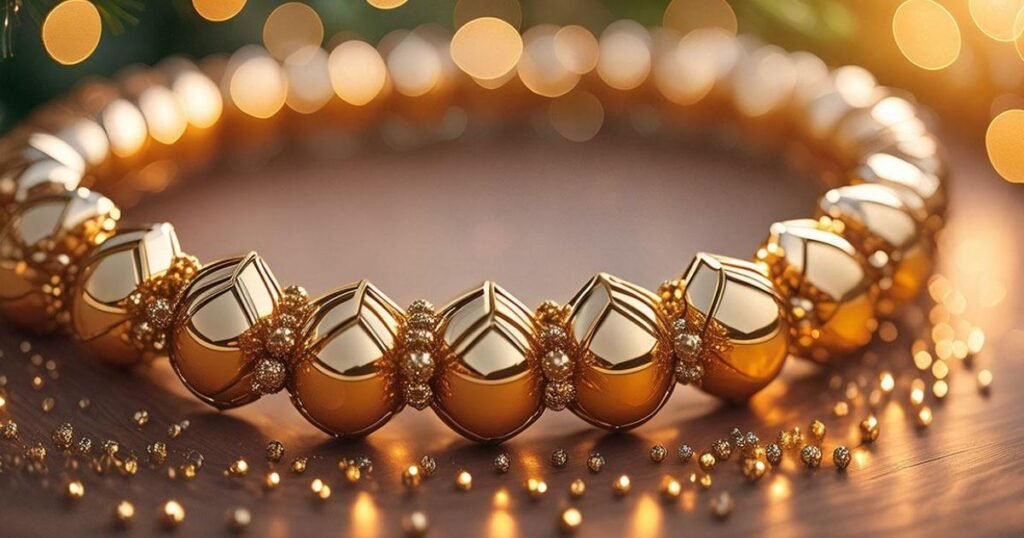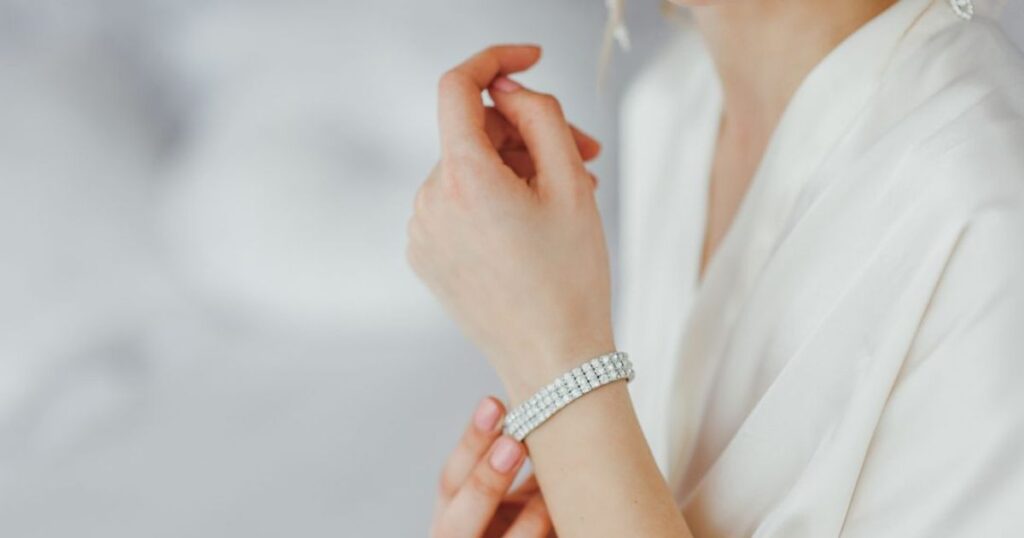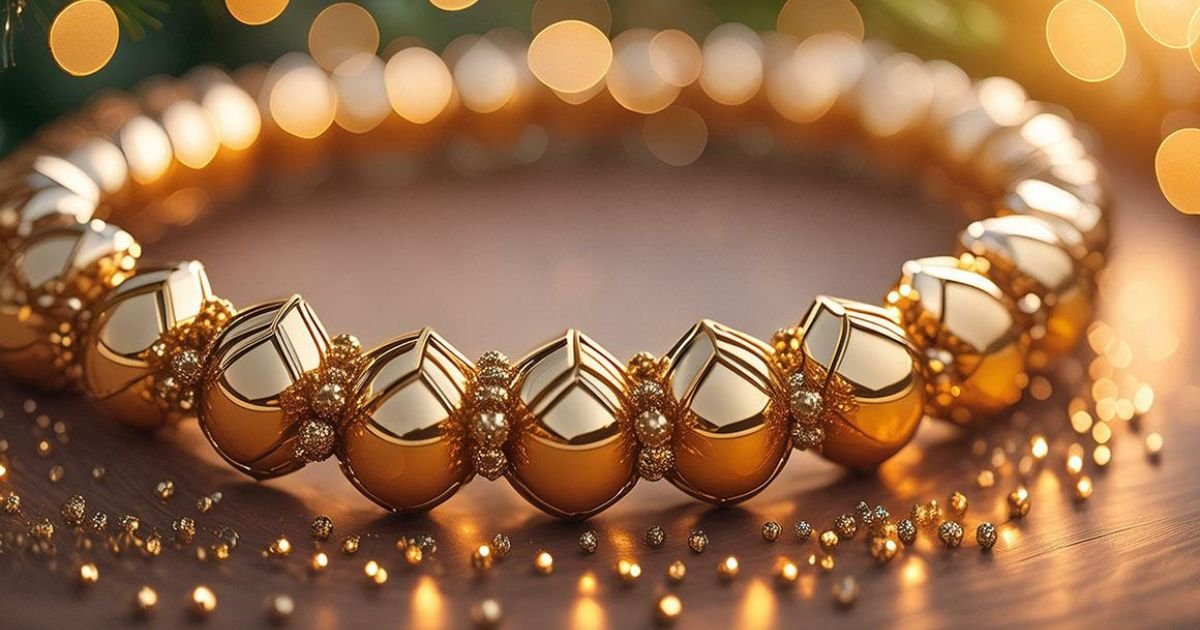
When it comes to purchasing bracelets, one of the most important factors to consider is durability. No one wears a wristband that falls apart in a few weeks. No matter if it’s to achieve a stylish everyday look or to wear it for a special occasion, it’s important to know which of Braslet’s materials will make it last. In this guide, we’ll explore the best materials for durable bracelets that will stand the test of time.
Why Material Matters in Bracelets

Bracelets are one of the widest used pieces of clothing in the fashion world and are famous for their power to create a “wow” effect on otherwise simple apparel. But durability is key, especially for pieces worn daily. A good bra, however, is not cheap, but only if its components are carefully selected. In this article, we’ll dive into the best materials for durable bracelets, ensuring that your jewelry remains beautiful for years to come.
Understanding the materials used in bracelet construction is crucial. Each material has its strengths, offering different benefits. By the end of this guide, you’ll know which materials are the best for durability, how to care for your bracelets, and what to look for when choosing the right piece.
1. Stainless Steel: A Reliable and Strong Option
Overview: Stainless steel is one of the most frequently used materials for braslet fabrication. Due to its toughness, resistance to tarnish, and low cost, stainless steel is a robust option for anyone who desires a durable bracelet.
Key Features:
- Corrosion-resistant
- Scratch-resistant
- Affordable and versatile
Pros and Cons:
Pros: Stainless steel bracelets are very strong, thus they are strongly recommended as a tool for repeated use. Neither do they rust nor tarnish, and thus they are low-maintenance and appropriate for a physically active population.
Cons: Although stainless steel is quite robust, it can be somewhat dense for some people and not feel as luxurious as more noble metals.
Tips:
- To keep the stainless steel bra/braslet shiny, it should be hand polished on a soft cloth.
- Make sure it is not exposed to strong chemicals such as chlorine which can damage the finish if left for a long period.
2. Titanium: Lightweight and Strong
Overview: Titanium bracelets are already known for their high strength and low weight. This metal is often used in aerospace and biomedical applications and offers high ductility in jewelry.
Key Features:
- Ultra-lightweight
- Hypoallergenic
- Extremely strong
Pros and Cons:
Pros: Titanium bracelets are resistant to bending and scratching. They are also less prone to induce an allergenic reaction, therefore, they are suitable for sensitized skin.
Cons: Titanium is sometimes hard to resize and it may be necessary to have it adjusted by a professional.
Tips:
- To prevent scratching the titanium bracelet, store it apart from other pieces of jewelry.
- Clean it regularly by wiping it with a damp cloth to make it shine.
3. Silver: Classic Elegance and Durability
Overview: Silver wristbands especially sterling silver wristbands are popular icons that combine elegance and resilience. Although lighter than stainless steel and titanium, sterling silver consists of other metal alloys to improve and strengthen the material.
Key Features:
- Timeless appeal
- Resists tarnishing with proper care
- Malleable, allowing intricate designs
Pros and Cons:
Pros: Silver bralets are very versatile and can be used with dressier or casual outfits. But when properly maintained, they retain shine and appeal.
Cons: Silver tarnishes with air and chemicals over time, and so it needs to be cleaned in order to maintain its shine.
Tips:
- If leaving the silver braslet out, put it in an airtight container when not in use so it won’t tarnish.
- Clean it with a silver polish cloth to deglaze the tarnish and bring it back to its natural shine.
4. Gold: A Luxurious and Long-Lasting Investment
Overview: Gold is one of the most cost and strongest materials for bralets. In contrast, since pure gold (24K) is not hard enough for daily wearing, gold alloys of 14K or 18K are some of the most common, in terms of the grade of hardness and aesthetic soundness.
Key Features:
- Timeless, luxurious appearance
- Corrosion-resistant
- Hypoallergenic (depending on alloy)
Pros and Cons:
Pros: The look of the gold bracelets is conservative, beautiful, and timeless. They are corrosion-resistant, which is a beneficial long-term option.
Cons: Gold can be quite expensive and, although it is sturdy, it can sometimes scratch too easily as compared to harder metals such as stainless steel or titanium.
Tips:
- Gold bracelets should be kept away from strong chemicals to prevent their finish from being damaged.
- Regularly polish your gold braslet to maintain its shine.
5. Leather: A Durable and Stylish Alternative
Overview: Leather braslets offer a unique, casual look. They are flexible, soft, and durable, at least for as long as the design is built upon the quality of leather. Slung leather is the item of choice for a bracelet used in a rough look, a rugged bracelet design.
Key Features:
- Flexible and comfortable
- Offers a unique look
- Easy to customize with designs and embellishments
Pros and Cons:
Pros: Leather wrist braces are comfortable to wear and will tend to conform to the arm with continued use. They are available in all sorts of styles, ranging from just plain to more elaborate ones.
Cons: Leather can be damaged by water or by adverse conditions over some time, and therefore the necessary care must be employed.
Tips:
- It is recommended not to wear a leather bracelet when going swimming or taking a shower because it can be spoiled by water.
- To maintain the soft and supple leather bracelet, wash it with water and apply leather conditioner.
6. Copper: A Durable Metal with Unique Appeal
Overview: Copper bracelets offer a unique, rustic charm. Cu, while less common than some other metals, has become more popular due to its sturdiness and special color.
Key Features:
- Malleable and can be shaped into intricate designs
- Corrosion-resistant when coated
- Has a warm, reddish hue
Pros and Cons:
Pros: Copper bracelets are fashionable and give a retro look to your jewelry style. They are also known for their antimicrobial properties.
Cons: Copper oxidizes to form a patina over time which can be unattractive to some.
Tips:
To prevent the buildup of tarnish, periodic cleaning should be done of the copper braslet with a cloth and vinegar salt solution.
It is advisable to apply a protective coating to your copper braslet to preserve the color and aesthetic.
7. Ceramic: Lightweight and Resistant to Scratches
Overview: Ceramic bangles have gained an increased amount of popularity in recent years on account of their light weight and scratch resistance. Ceramics is being reported extensively in contemporary fashionable productions due to its aesthetical and fashionable look (e.g., ceramic’s attribute of heat insensitivity is often used by engineers who want to use ceramic in any geometry).
Key Features:
- Scratch-resistant
- Lightweight
- Resistant to fading and discoloration
Pros and Cons:
Pros: Ceramic bracelets are super hard and scratch-proof and can be found in numerous stylish designs.
Cons: Ceramic is brittle and can crack or shatter if it is dropped, so must be treated with care.
Tips:
- Store your ceramic bracelet carefully to avoid accidental drops.
- To maintain its original appearance, wipe it with a gentle cloth.
8. Tungsten: A Super-Strong Material for Heavy-Duty Use
Overview: Tungsten is one of the hardest metals that are used to make jewelry, is an effective option for someone who wants a strong bracelet that will not give way to heavy use.
Key Features:
- Extremely strong and scratch-resistant
- Retains its finish over time
- Ideal for people who lead active lifestyles
Pros and Cons:
Pros: Tungsten bracelets are incredibly durable and resistant to scratches, making them ideal for those who work with their hands.
Cons: Tungsten is very hard which means it is hard (difficult) to achieve the reduced size.
Tips:
- Tungsten bangles should require relatively little care, however, cleaning from time to time will help them maintain their sparkle.
- Do not drop your tungsten bra as it will falter under the strain.
9. Palladium: A Precious Metal with Strength and Durability
Overview: Palladium is a very desirable metal that improves the quality of high-end jewelry thanks to its durability and its luxurious aesthetic. It is a good choice for people who want a strong design without aesthetic concessions.
Key Features:
- Corrosion-resistant
- Hypoallergenic
- Durable, even in harsh conditions
Pros and Cons:
Pros: Palladium bangles are non-corrosive, non-abrasive, and therefore more suitable for long-term wear. They are also ultralight and more scratch-resistant than gold.
Cons: Palladium is more costly than the price of many other materials, and therefore less economically sensible.
Tips:
- It is desirable to handle palladium bracelets carefully and to prevent contact with strong chemicals.
- Maintenance of their brilliance can be accomplished by regular use of a soft cloth for cleaning.
Conclusion:
Selecting the appropriate material for the braslet is crucial to ensure a long life of the braslet of several years. There are individual advantages for each material which means the choice depends on your taste for style, strength, and comfort. Stainless steel, titanium, gold, silver, and various other materials (e.g., leather and ceramic) have each of their beneficial properties, and you can select one that is optimal for your needs and lifestyle.
However, no matter whether or not there is any strength preference, style, or hypoallergenic requirement there is a hard braslet material to suit the requirement. Don’t forget the care instructions to extend the life of your piece and, above all, quality over quantity when shopping for a braslet. By choosing the correct materials, you can wear your jewelry for many years.
FAQs
What is the most durable material for bracelets?
The most durable materials for bracelets include titanium, tungsten
What is the most durable material for braslets?
Bracelets are made from titanium, stainless steel, and tungsten materials. These metals are characterized by their rigidity, scratch resistance, and ability to resist deformation associated with daily wear without deformation or loss of shape or surface finish.
Can leather braslets last long?
No, leather braslets will last a long time if they are also well maintained. Utilizing repeated cleaning and conditioning without immersion in water or harsh chemicals, the lifespan and the aesthetic of the leather will be protected over time.
How do I prevent my gold braslet from tarnishing?
To prevent tarnish on your gold bracelet, store it in an airtight seal when not in use, do not intentionally expose it to harsh chemicals, and polish it regularly with a soft cloth to restore it to its sheen.
Are ceramic braslets durable?
Ceramic bracelets are impact-resistant and lightweight, and therefore comfortable for daily use. However, ceramic is a brittle material to shatter, i.e., to fracture just by drop, and, therefore, it must be treated with care by users, e.g., the users themselves have to take care.

